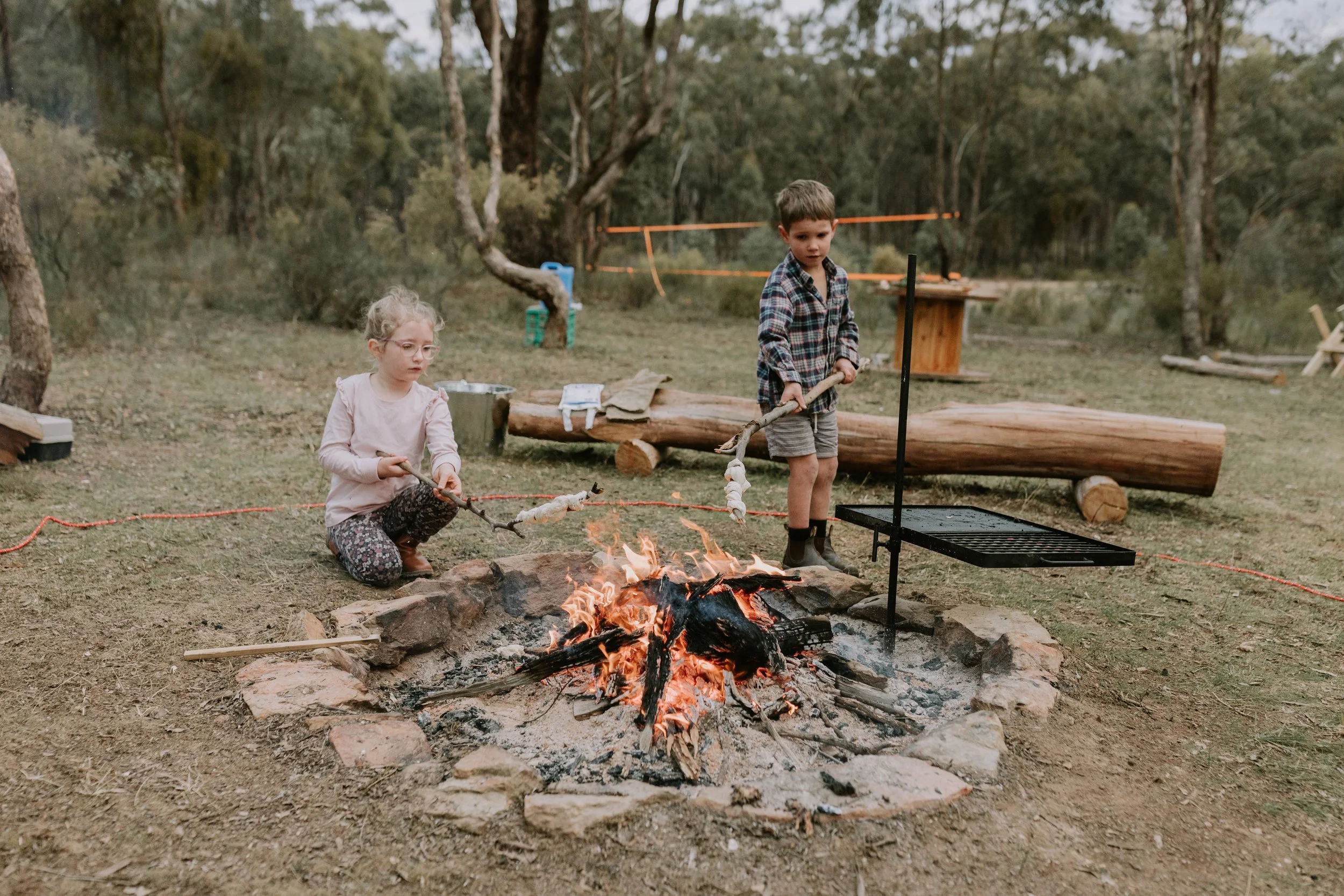Getting real about authentic (risky)? play
You see, we’ve done our market research here at WildPlay Co and we know that one of the biggest barriers to people investing in our programs is some of the risky activities that children can participate in if they choose. Read on to discuss these activities and our approach to risky play. Hopefully by the end of this blog post you will see how important risky play is to healthy child development and that protecting children from risk does not in fact, protect them from danger.
Risky play…or just play?
Let’s take a little trip down memory lane for a moment. Back to when we were children. Climbing trees to make a tree house, jumping from heights and roasting marshmallows by the fire were common past times. We actively sought opportunities for challenge and risk taking during play however, attitudes to these kinds of activities have changed in recent times. They now belong to a ‘risky play’ category, where activities are considered a safety hazard requiring extensive risk mitigation or not to be engaged in at all. The nature immersion industry challenges this concept by redefining risky play as authentic play…or just play.
This is compounded by a change in parenting styles in recent times. Where children often heard the phrases “be home before dark” or “be home in time for dinner”, these days parents and carers are less willing to give their children this level of freedom.
In the nature immersion industry, risky play is considered an important component of nature pedagogy and can be defined as;
“Thrilling and exciting activity that involves a risk of physical injury, and play that provides opportunities for challenge, testing limits, exploring boundaries and learning about injury risk”
Ellen Sandseter, a Professor of Psychology at the Queen Maud University College of Early Childhood Education in Norway and a world-leading expert in risky play and wellbeing in early childhood has identified six categories of risky play that children innately seek out;
Play at great heights
Play with great speed
Play with harmful tools
Play near dangerous elements
Rough-and-tumble play
Play where children can disappear or get lost
When children engage in these activities whether it be climbing a tree, swinging on a rope swing, sword fighting with sticks or playing hide-and-seek they develop valuable life skills such as managing their own feelings of fear and anger (emotional regulation), building an awareness and confidence in the limits of their bodies and skill set, fostering resilience and persistence, problem solving and understanding consequences to actions.
What this all means is that when engaging in risky play, children are developing the skills and confidence to cope when real-life challenges arise. So by allowing our children to engage in Sandseter’s categories of risky play, we are doing our job of preparing our children to face the life challenges they are likely to experience in an emotionally healthy way.
As safe as necessary, not as safe as possible
Safety of children, parents/carers and staff is of upmost importance to us a WildPlay Co therefore to support risky play, we have a number of policies and procedures in place including;
Outdoor learning and nature play policy
Risk Benefit Assessment Policy
Emergency Procedure Policy
Individual policies and procedures for all risky play activities (Fire, Tree Climbing, Rope Play, Water Play, Hand Tools)
In addition to this, we exceed the National Quality Framework recommendations for child to staff ratios and have a strict staff training policy as well an annual refreshers in practical skills and emergency procedures. And while trained educators and empowered children support the WildPlay Co risky play approach, we accept that scrapes and bruises are likely to occur in our sessions. We aim to keep the children in our programs as safe as necessary, not as safe as possible.
Do you still have questions? Please contact us as we would love to hear from you and discuss our approach to risky play. Ready to jump in? Explore our programs here.
Are you ready for Wild Play?
Courtney


